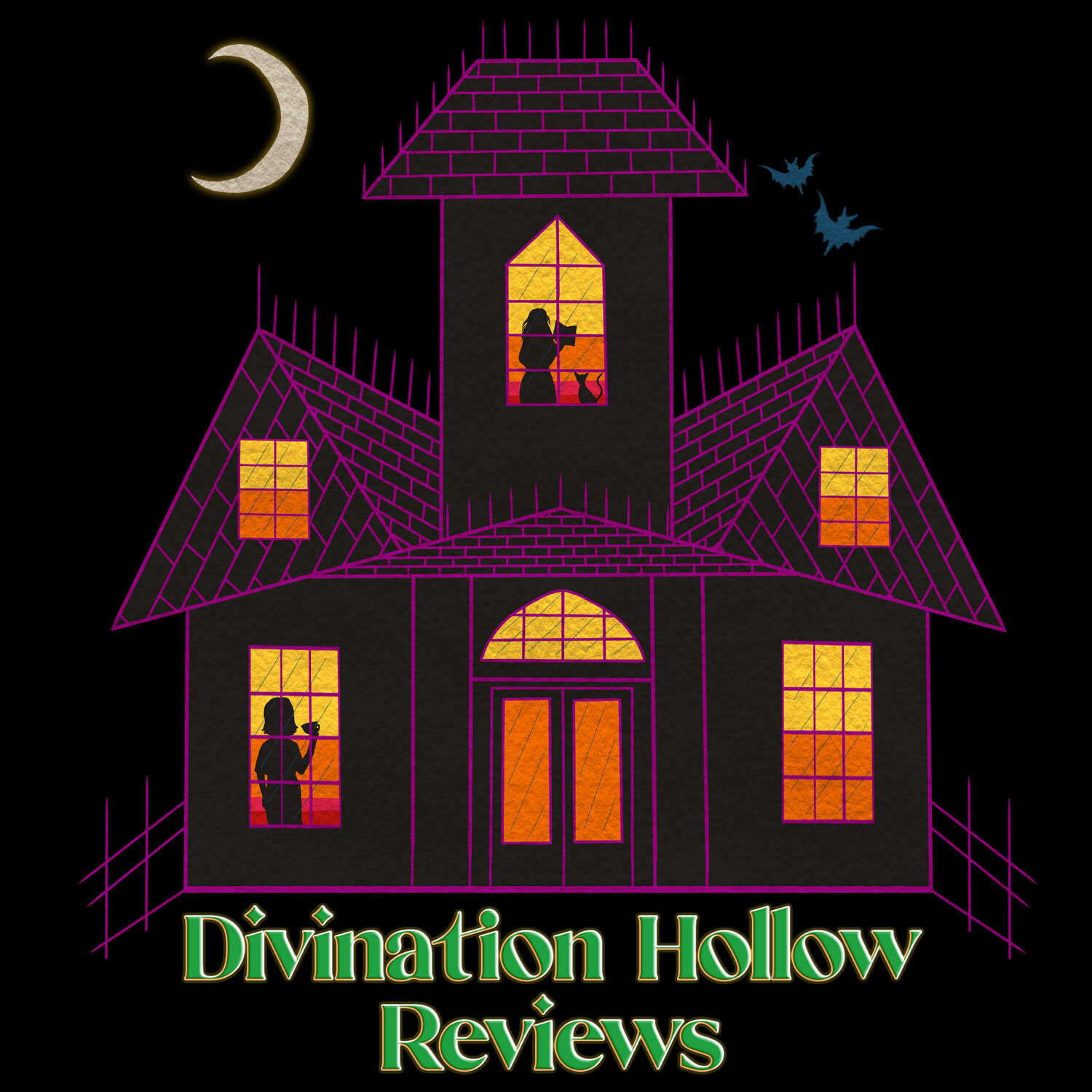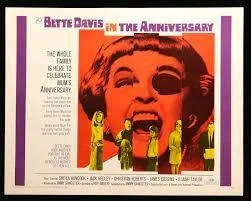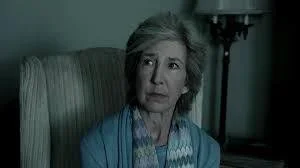Women in Horror Month: Whatever Happened to Hag Horror by Beverley Price
Whatever happened to "Hag Horror"?
While doing some research for my book on horror films in a section explicitly looking at Whatever Happened to Baby Jane?, I came across the term "hag horror". As a woman who recently celebrated her 40th, I found the term offensive, but is there more to the sub-genre than macabre exploitation and giving actresses considered "past it" by Hollywood some work? So here is my journey through the subgenre also known as "hagsploitation", "Grande Dame Guignol", or "psycho-biddy". How we have these grand dames of horror, characters that want to recapture their lost youth, trapped by a version of a childhood that is either overly revered or troubled. Women have had to deal with the loss of a loved one, be it a family member, partner, or child. They may be dealing with violence from their father or their husband. Sometimes too close to the truth for the actresses playing these parts, no longer relevant in some artistic spheres. This leads them to be facing their own mortality, and unable to do this leads them to face some sort of mental or physical issues, which leads them to be ostracised from society, realising their distress. "Hag Horror" showcased more mature actresses that were still lively.
These actresses made Hollywood what it is today, built it up from nothing and were huge box office draws. The Golden Age of Hollywood had ended by the end of the 1950s when former greats' "beauty", popularity and reputation diminished. Hollywood turned them away, despised, straight into the arms of directors who would give them a chance to go crazy in exaggerated thriller/horror and boy, do they go crazy. "Hag Horror" started at the same point I first discovered the term, roaring into existence with the feud between Bette Davis and Joan Crawford in Whatever Happened to Baby Jane?, where they are covered in pancake makeup in 1962, and are shockingly old and ugly, feeding society fascination with the fallen celebrity. The Robert Aldrich film (based on a book by Henry Farrell) follows two former stars whose sisterly opposition leads to death and madness. This was cleverly mirroring not only Crawford and Davis infamous hate for each other but their own diminishing popularity.
Jane Hudson (Davis), aka "Baby Jane", has a huge mountain to climb to develop a new acting career for herself. Blache Hudson (Crawford) uses a wheelchair and is helpless against her sister's violent, intoxicated attacks. Their relationship is one of deceit and ego. The film opens with an envious Blache as she watches her sister on the stage, being unnaturally adorable. But, as time goes, the fortunes for the two sisters change until a car "accident" leaves Blanche partially paralysed and being cared for by an aggressive Jane. The fact that the two actresses did not get on well in real life gives the characters a believabilty that jumps off the screen. And with Whatever Happened to Baby Jane? 's surprising success, a subgenre was born, middle-aged spats and neurosis, and it took off. Take away their "beauty" and pump up the overacting, and you have a magical hit. But, it was a risk to make this sort of portrayal at the time. If either of these award-winning actresses did not give 110%, it would have made the film a joke. But Davis received a nomination (and was robbed) for the Best Actress, and it showed many older actresses that they could get a role if they were willing to over-emphasise their ageing process.
Whatever Happened to Baby Jane? is still a powerful film. That ending scene has ghastly lovelessness to it. A mixture of highbrow and lowbrow that was rarely matched in any of the films that followed. Offensive term aside, if nothing else, these films gave former stars a chance to shine as the villain. This could be Minne Castevet (Ruth Gordon), a Satanist in Rosemary's Baby or vindictive Mrs Voorhees (Betsy Palmer) in Friday the 13th. Unfortunately, it became one of the exploitation tools for William Castle, with his most well-known being Straightjacket, Berserk, and I Saw What You Did. "Hag Horror" does have some remarkable films, but the portrayal of older women has issues. Instead of changeling society beliefs, these films confirmed that being old, unmarried and female is evil. And ultimately, these films are based solely on gender, mental issues, and ageism are deadly and demeaning.
Somehow being both bleak and campy simultaneously, it became a vital but often bizarre part of the horror landscape for over a decade. Society is both enchanted and disgusted by older women, especially those that are nothing more than a ticking time bomb to madness and murder. After Whatever Happened to Baby Jane?, the next big film in Hag Horror was Hush…Hush, Sweet Charlotte, also directed by Aldrich and starring Davis. Here she is an eccentric elder recluse whose reeking home will be torn down, excluded from her community as she feels is answerable to the death of her fiancée at their engagement party 37 years previously. It is also implied that she may have murdered someone when she was younger, which would soon become a Hag Horror trope. Initially, she is helped by her maid Velma (Agnes Moorehead). Then, she reluctantly gets help from her cousin, Miriam (Olivia de Havilland), who randomly turns up to keep a roof over her head. Their relationship is not precisely on friendly terms. It is basically the same plot as Whatever Happened to Baby Jane? changed a little and the crazy level pushed up a notch. Personally, I find Moorehead irritating, as she seemed to want to outdo Davis overacting without understanding the depth of the acting.
The exact path to madness does not hit the same highs as Whatever Happened to Baby Jane? but it’s still an excellent film. Hush…Hush Sweet Charlotte has emotional stress, grisly secrets, beautiful cinematography, and a terrific cast, including Bruce Dern, Victor Buono, Joseph Cotton, and Mary Astor. But Davis is the star of the piece. Charlotte is a more caring character than Baby Jane, but there is plenty of screaming rages and nostalgia for lost and youth love. It is not as enjoyable as Whatever Happened to Baby Jane? but it is still great. Unfortunately, the multiple plot twists make the film illogical. Hush…Hush Sweet Charlotte was nominated for numerous Oscars, such as Moorehead for standout performance and Best Song, which hit #8 on Billboard's Hot 100. Although it did not win any. This continued to give the genre of Hag Horror some legitimacy.
Interestingly, the role of the cousin was to go to Crawford, making Hush…Hush Sweet Charlotte feel even more like Whatever Happened to Baby Jane? but Davis's mind games caused Crawford to check herself into a hospital due to extreme paranoia. Other significant Davis "hag" roles include two excellent performances for Hammer. Firstly, The Nanny, a film filled with despair and daftness, with Davis as the titular character. The plot revolves around the family's young daughter "accidentally" drowning in the bath. Her brother (William Dix) is convinced that he is the next to face an "accident", starting a tragic game of cat and mouse. Davis is determined to remain as the family caretaker, no matter how much her young charge accuses her of murdering his sister. Piting the "hag" against a child might have been a way to bring in a younger audience. However, it is accidentally cementing the premise that old women want to kill anyone that reminds them of their lost youth. Secondly, The Anniversary, the eye-patch wearing repulsive mother figure from hell, Mrs Taggart, whose maniac laughter will stay with long after the film has finished. Davis is nearly unrecognisable in these roles. Interestingly Davis never played the victim.
The other "hag" superstar Crawford is an axe-wielding maniac in Straightjacket. Straightjacket sees Castle and Crawford, a match made in melodramatic camp glory. Honestly, I think this is Crawford's best performance, fraught with nervous energy and fidgety zeal, a vibe that you feel coming off the screen in waves. The opening scene of Crawford's character Lucy decapitating her husband and his lover is now brilliantly iconic in horror history, proving once again that hell hath no fury like a woman scorned. However, the act is witnessed by her young daughter. Upon being released from an asylum, Crawford's desire to please her daughter's boyfriend releases evilness that causes more deaths and more insanity. Crawford is delightful as Lucy, and the Hitchockain feel gives the film some gravitas. She chops and screams through the countryside, leaving the rest of the actors in her dust.
Even cultured and refined, De Havilland was the star of her own Hag Horror with the Walter Grauman's Lady in a Cage, which ended up being violent and revolting, with a young James Caan, as the terrifying drug-taking thug. Hag Horror has never been accused of being understated, but this film takes the genre stable of bad mothers and adds a twist of Hitchcockian dread and claustrophobia. De Havilland plays Cornelia Hilyard, lives an arrogant illusion, and believes her son only wants to spend time with her. She also thinks she is a fantastic poet, which keeps her tranquil. During a heatwave, she breaks her hip and is stuck in an elevator, the titular cage in her mansion. Unfortunately, her cries for help attract trouble, with her home being robbed and threatened with murder and mayhem. However, no one expected De Havilland to fight back, leading to Caan's appalling demise. Maybe to represent the desire of what these ageing actresses would like to do to Hollywood. However, when the bloody scene is discovered, their reaction indicates that people do not care. Lady in a Cage is filled with emotional tension giving the outlandish premises some stability. Although Mrs Hilyard is one of the most oppressive characters, meaning that the audience is just about sympathies, her cheerfulness hides a violent streak leading to one of the most disgusting finales in Hag Horror films. Because of the ending, Lady in a Cage was described as "socially harmful" by The New York Times critic Bosley Crowther. Unlike many of its counterparts, this film is neither campy nor fun. Instead, Lady in a Cage's sleaziness emphasises what De Havilland goes through during the film.
Interestingly, Hag Horror does delve into taboo subjects. For example, The Nanny includes abandonment of a child and back-alley abortion. The Killing of Sister George's central relationship is a lesbian one, which breaks down to the behaviour and lack of confidence of "Sister George". Even What's the Matter with Helen? has an underlining lesbian attraction between Helen and Adelle, although Shelley Winters stated that she played the lesbian angle directly. What's the Matter with Helen? was also nominated for an Oscar for costume design. Taking the Hag Horror full circle, we have a film set in 1930's Hollywood. After their sons are imprisoned after murdering a woman called Ellie Banner, Adelle (Debbie Reynolds) and Helen (Winters) try and rebuild their lives. They decide to move to Hollywood, change their surname and appearances, and set a dance school looking for the next Shirley Temple. However, someone knows who they are and is unhappy that their sons are not facing a death sentence. This someone could be the man in a brimmed hat hanging around street corners. Adelle soon falls for a wealthy playboy type, pushing timid Helen over the edge as she kills men and bunnies. Adelle is a character that wants to live, whereas Helen is a character that wants to die after their sons are convicted of murder. Closer to a psychological horror than the exploitative counterparts, it is a film about the albatross that hangs around the neck of those connected to murderers; even reinventing themselves can not escape their past, mainly because they have taken their toxicity with them.
What's the Matter with Helen? 's dense script was penned by Henry Farrell, who wrote the novel Whatever Happened to Baby Jane? and produced George Edwards, but Reynold and Winters's performances make this film perfect. The setting of 1930s Hollywood gives the film depth. The meticulous set design by Eugene Lourie provides the film with a rose-tinted sheen, from the unnaturally detailed newsreel to the dances performed by the little girls at the dance school. However, Reynolds and Winters look jaundiced due to the colour choices that What's the Matter with Helen? filmed with. They do not look their best, but they are not as crazy looking as Davis and Crawford in Whatever Happened to Baby Jane? This would make a great double feature with Sunset Boulevard or Theatre of Blood. Mmm, I suppose Vincent Price seeking revenge in many of his films is the closest we get to a male Hag Horror. Unfortunately, some of the ideas from What's the Matter with Helen? are removed from the final piece, including the bloodier aspects of the last murder scene and Helen kissing Adele on the lips, making lesbianism more overtones than the undertone that we now have. As well as the influential stars, the film has many great supporting cast, such as Agnes Moorehead as Sister Alma, a radio preacher, who is threatened by Helen during mass. Others include Logan Ramsey, a police detective; Timothy Carey, a homeless beggar; Yvette Vickers, stage mom and Pamelym Ferdin, Adelle's dance students.
Even What Happened to Aunt Alice? has queerness where it seems evident that Ruth Gordon's character needs to discover what happened to Edna because they had been in a relationship. We have Geraldine Page and Gordon battle each other using their wits and mind games. While better known as the Satanist in Rosemary's Baby, Gordon is still significant in this, as is Page, who plays the belligerent widow Claire Marrable. Claire is forced to Arizona to live near her nephew, as her manner and tetchiness worsen as the film progresses and becomes murderous. Claire's M.O is to murder her housekeepers once they have left all of their possessions to her. Her latest victim was timorous and doomed Edna Tinsley (Mildred Dunnock). Even before they were murdered, the staff were treated miserable, whose primary role appeared to be getting Claire drinks, and they received little other than verbal abuse.
Enter stage right is Gordon as Alice Dimmock, Edna's friend, Claire's newest housekeeper. But Alice is there to try and find out what happened to her friend, and sparring commences. Possibly one of the best older women fights ever put to screen. Page is not only a great actress but an eccentric one. While the plot is on the slim side, Page is perfect as Claire, as she is domineering, effusive, demanding, obsessed, and psychotic, who just wants to watch her pine tree grow! Page is given some of the best lines, delivered in her unique style, punctuated by her characteristic boisterous laugh, which means she could get away with, well, murder. My favourite line is, "She's like crabgrass - never really quelled - only cropping up secretly and victoriously in another spot." Gordon plays the "straight man" to Page's over-the-top acting, although Gordon still has a feisty streak to her performance. While Alice is devious, Gordon gets over that she is also an empathetic soul. This is needed as a contrast to Page's bitchery portrayal. You watch this film for the actresses on the screen and not the plot. This film is often thought of as one of the forerunners of New Queer Cinema. Males in Hag Horror in these films are most often two-dimensional. There is often nothing more than plot convenience. But when it comes to modern films, the older women role was not always that of a monster. By the 90s, horror as a genre is slowly gaining some creditability, slinking off its exploitative roots. The haunted house and demon possession films have become more popular, giving some exciting roles to older women, like Helen Mirren in Winchester. Take someone like Lin Shaye, who is far older than Bette Davis was in What Happened to Baby Jane?, played outlandish crones in Farrelly brother comedies but plays much more of a straight role in horror. Her role in the Insidious franchise, a seventysomething tackling the evil, and not being the evil, is a breath of fresh air. Hag Horror from the 60s and 70s has not died off completely, and you still see hints of it every now and again. Stephen King has his own "hags" in both Misery and Carrie, and Kubrick uses that imagery, and man's fear of the crone, with the ghost in Room 237. Trends changes on the role of the dice and Hag Horror may return, but as it stands now, the biggest question about the older females roles is now where the BAME representation is.
The peak of Hag Horror was the 1960s, a time of change within the horror genre, with many defining films being made during that time. Looking at the films under the banner of Hag Horror, these films feel regressive, the only selling point being the overly dramatic, odd plots and the unusual choice of actresses supposedly "past their prime". Like all genres, they are the good, bad and the WTF, but there are films with style and talent that makes them great. It is difficult to get past some of the misogyny wrapped up in the portrayal of these women, often deemed insane for a myriad of reasons, but usually because they got old. I stand by the fact that the term Hag Horror, etc. are offensive, but I can not say all of the films are. What Happened to Baby Jane? is one of my top ten favourite films, and there are other gems out there. These films' campy nature masks the real sense of grotesqueness of the disaster and disturbances of life. But it is refreshing that in modern horror, the older women's roles are more than just crazy older ladies who suddenly decide to be killers, sometimes the older woman is the hero, and long may that continue.
Beverley Price is a writer who hails from a small town in Carmarthenshire, Wales, a three-time winner of the title “Chief Poet Skald of Suffolk”, a local eisteddfod. She has had a poem published in an E-book called “Poems from Beyond the Grave” and “Serial Killers - A Pizza Eaters book”. Beverley has her own poetry book, “The Flowering of the Black Petal” and “By Ink, By Pen, by Paper: A Tribute to Black Petal” under the alias Stormy and a novel “Blood Bound”. Beverley is a feature writer for the London Horror Society, looking at “so bad, they’re good” films, Hammer Horror and banned films in the UK.
Beverley is always open for conversations about horror, and the weirder, the better @stormywriter2.









